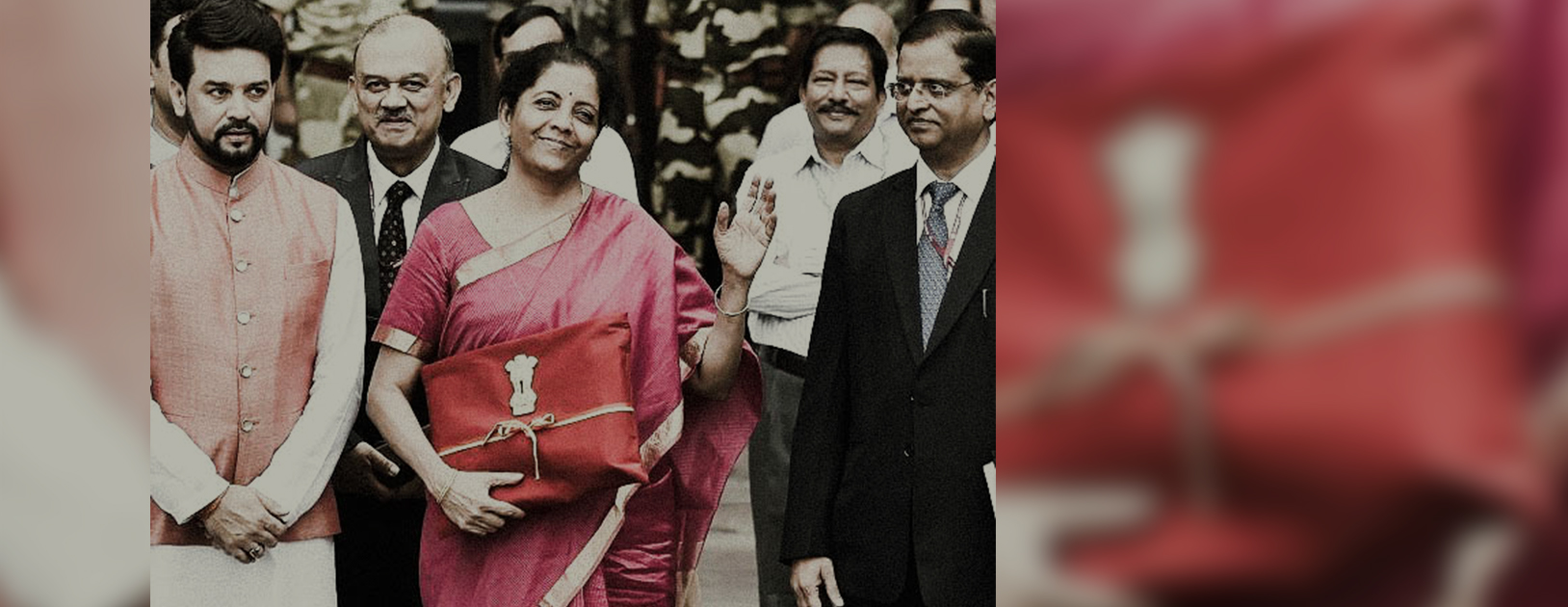Analysis of Union Budget 2019
On Friday, July 5th 2019, Finance Minister, Nirmala Sitharaman tabled the new government’s first budget. Against the backdrop of a resounding election mandate and an economic slowdown, expectations from this budget were high. Scholars at the Centre for Policy Research (CPR) keenly watched the budget. We are delighted to share with you a compilation of analysis and commentary by CPR faculty.
Union Budget: A lost opportunity
Yamini Aiyar
In Hindustan Times, Aiyar calls the budget ‘a lost opportunity’, highlighting that the government has chosen an incrementalist approach rather than announcing radical structural reforms despite its mandate, making clear that Modi 2.0 is going to steer the familiar course. In particular, Aiyar argues that the government has failed to articulate a vision for rural economy, particularly agriculture, overlooking several fundamental issues such as a regressive subsidy regime, badly regulated markets and weak procurement infrastructure.
What the quest for a $5 trillion economy entails
Partha Mukhopadhyay
Partha Mukhopadhyay writes in Hindustan Times that ‘a first budget could have tried harder’ especially given the massive mandate the government received in the elections. Mukhopadhyay questions whether the inertia of the budgetary process sabotaged the claimed novelty of the budget, pointing out that budget shares of several older major schemes have been reduced, even as their absolute allocations have risen.
Budget 2019 Fails to Give Education the Radical Boost it Needs
Kiran Bhatty
Kiran Bhatty writes in TheWire about how the budget fails to give education the radical boost it needs. Bhatty sheds light on the National Education Policy – a policy that recognises correctly the critical juncture at which the sector is poised and the need to invest in it, but highlights that all its good intentions and recommendations are likely to come to naught if the finance ministry does not find a way of opening its purse strings.
Farm to health to education, Modi govt’s Budget has no clear vision for India’s social sector
Avani Kapur
Avani Kapur writes in ThePrint about how the budget missed an opportunity to articulate a comprehensive vision for the social sector and instead ‘reverted to the Narendra Modi government’s old avatar – a focus on infrastructure and a mission-mode model of meeting targets, this time for water’. In particular, against the backdrop of several health disasters faced by the country and the worrying results of NITI Aayog’s Health Index, Kapur writes that the budget needed to focus more on coordinated efforts and convergence across departments and ministries for health, education, WASH (water, sanitation and hygiene), food and social security.
Budget 2019 Is Ambitious on Healthcare. But More Can Be Done
Avani Kapur and Ritwik Shukla
Avani Kapur and Ritwik Shukla write in TheWire that while the budget is ambitious on healthcare and has taken a few steps in the right direction, there is a need to intensify public expenditure on health. While budget allocations have increased compared to the interim budget focusing on quality of public health services, Kapur and Shukla write that more attention needs to be paid to convergence across ministries, such as MohHFW, MWCD, MJS, among others.
Budget 2019: Will Welfare Policy Under Modi 2.0 be About Entitlements or Empowerment?
Yamini Aiyar
In the run-up to the budget, Yamini Aiyar writes in TheWire about how the budget is an opportunity to chart the policy course for the next five years through bold welfare reforms, especially given the government’s historic mandate. Aiyar explains the challenges of financing welfare expansion while balancing the concerns of extensive fiscal slippage. She writes that the budget must address the relationship between income support and existing subsidies as well as the existing basket of welfare schemes.
[WATCH]: Yamini Aiyar analyses key takeaways from the Union Budget 2019
Yamini Aiyar
Yamini Aiyar participated in a panel of experts analysing key takeaways from the budget on NDTV. Aiyar sheds light on the challenge of strengthening the Indian manufacturing sector, the critical reforms that need to be undertaken in the agricultural sector, and the need for rational and leaner financing of social sector welfare schemes.
Budget’s flawed swadeshi objective
Shyam Saran
Ambassador Shyam Saran writes in the Business Standard about how the policy objective of import substitution in the budget is worrying. He highlights that the goal to make India a $5 trillion economy is only possible when the economy is a globalised one and will not be realised through protectionist policies. As tariffs on a range of imports are raised, Saran warns that the country runs the risk of slipping to the pre-1991 sub-optimal strategy of growth, based implicitly on import substitution and protected domestic production, pointing out that this will make Indian industry less competitive.
Budget Briefs by Accountability Initiative: Social Sector Analysis
Find the complete set of budget briefs by Accountability Initiative analysing trends in allocations, expenditures and outcomes of 10 social sector schemes of the Government of India in the areas of education, rural development, water and sanitation, health, and maternal and child nutrition.



